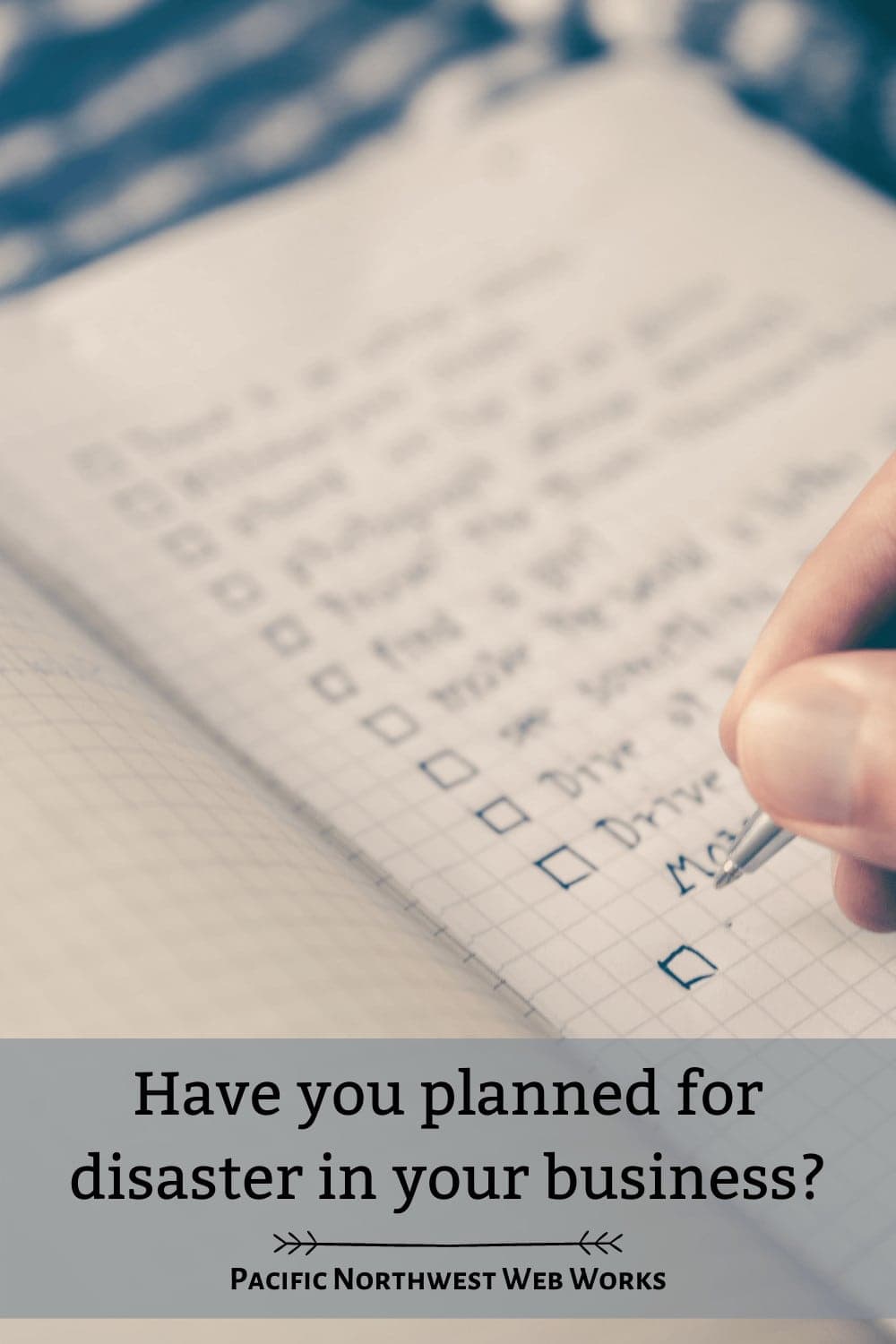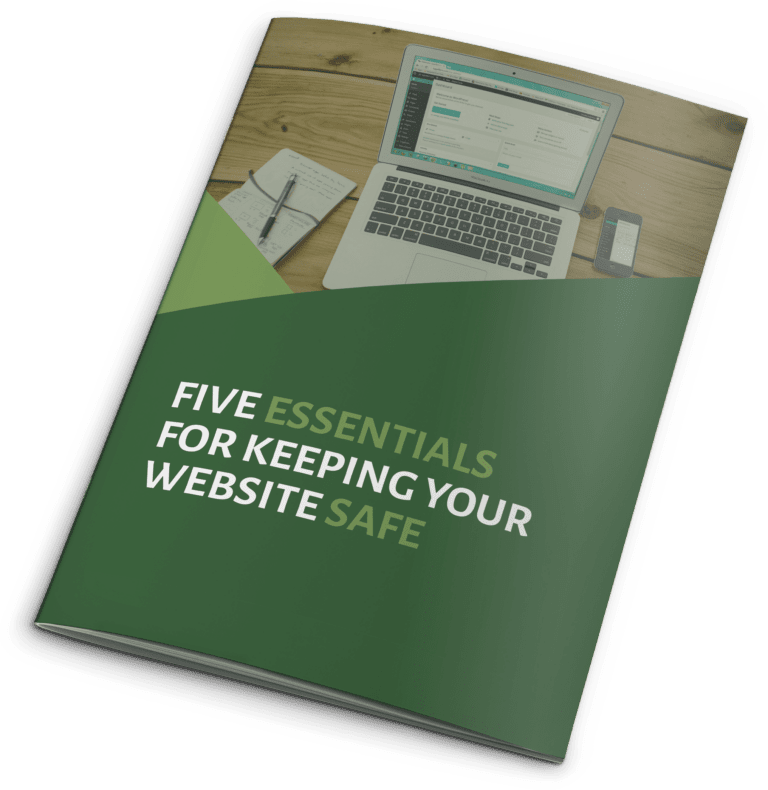If 2020 has taught us anything it’s that we need to be prepared for the unknown. Depending on where you live, the shutdowns were worse for some than others. But are shutdowns the only type of disaster that small businesses need to be prepared for? Let’s talk about types of disasters and how you can prepare for them.
When I say the word ‘disaster’, many people jump to hurricanes, floods, and things of that nature. But just about anything can count as a disaster in the life of a small business. And since many small businesses have little to no employees this only compounds the problems.
Craft businesses, solo entrepreneurs, and freelancers typically don’t have a backup person and commonly are the only person that knows the ins and outs of the business.
Even if your business is not the primary income for your family there are still concerns that you need to consider for disasters.
Let me give you a story to help bring this home.
I had a client for a few years that had us helping to manage their website. Eventually, we moved and they moved and we both parted ways. A few years down the road I get a frantic call from the owner’s son.
His father had passed away suddenly, and nobody had access to the website. To make matters worse, orders were continuing to come in through the website. The family had no way to fill the orders and no way to stop them from coming in.
Instead of being able to step back and grieve for the unexpected loss, they were dealing with angry phone calls and tons of stress.
In the end, I was able to work with the new providers using information they had and information I had and verify the family. They managed to pause the business, handle the open orders, and smooth some ruffled feathers.
But it all could have been avoided with a little planning.
Types of disaster
Two primary types of disasters can affect your business. External disasters and internal ones. Each one also typically has a different approach to how you need to prepare to handle it. Sometimes the external ones create an internal disaster as well.
External Disasters
2020 was the perfect example of an external disaster. External disasters are those that you have no direct control over and are caused by outside forces. They deal with you being unable to work as you would normally, often for a short while.
Having to evacuate before a forest fire or hurricane reaches your area is another great example.
Many external disasters can be combated by having great communication and savings in your business.
Internal Disasters
Internal disasters are those that only affect you or your family in most cases. More often an internal disaster comes in the form of injury or death. If you are injured in an accident, you might not be able to continue working on your trade. It could be while you heal, it could be permanent.
These also affect the family members of the business owner. In a case where the owner dies, the family is left to take over the role of managing the business. Either they need to close out the business or continue running it if they so choose.
Planning for a disaster
To keep the business running smoothly or allow someone to handle the business needs you need a plan in place. And that plan must be in place and regularly updated so it can be implemented at a moment’s notice.
The best place to start is to identify the areas of your business that only you know how to run. Start by writing down your daily tasks and things you do to work on your business. Do this for weeks and months to make sure you don’t forget anything.
One of the next hardest steps is to identify who can take over your business in the event of something happening. For some businesses, a family member or relative can take over. For others, you will need to find an industry partner that you can build a relationship.
The last thing to do to prepare the plan is to start collecting access to all accounts that the business has. This is everything from bank accounts, to email, to websites and software the business uses.
Once you gather the information and processes together, the next step is to compile them into a single document. This document should be placed in a location that your take-over person can access without any question or support from you.
Creating the plan

This section will give you a rough idea of how I laid out my plan, so you can start to craft your own. The format or order does not matter. You just need to document any details to keep your business running or allows someone else to shut it down smoothly in the event of an emergency.
Opening
The opening should be a paragraph or two. Thank the person for helping and give a brief overview of the document.
External Plan
Have a brief overview of the steps you need to take in the event of an external disaster. Plan out what you need to do to let your clients know that something is happening. Document how to recover items such as lost tools, what funds to use for what situation, and where backups are stored.
If you are not sure how to do something or use a tool since you don’t use it often, write that here as well. Things like how to restore a computer backup.
Funds
This section should outline what funds are available as an emergency and where typical payments are coming from. Items that are auto-paid should be listed here, along with what account(s) they come out of.
Accounts
Here you should outline all the accounts, and the proper login information to get into those accounts. If your account contains two-factor authentication, you should include a couple of the backup codes if available.
Some examples are Email, Website, Banking, Social Media Accounts, Computers, Backup Services.
Procedures
Your business should have a process to handle sales or customers. This section should document what should happen in that process. It should also cover how to give refunds, how to process orders, etc.
In my document, I even give pre-written responses that the person who takes over can send to each client. I keep an updated list of my active clients in the same spot as the emergency procedures. I have even gone as far as crafting responses for different lengths of away time.
If you would like the person taking over to add responses to social media, ensure you give them instructions and the account information.
You could also include the task list that you came up with previously.
Next Steps
You need to outline what should happen and how long they will need to handle things in different situations. If you are a small sales craft business, it could be simply complete all the open orders and turn off future orders. In my plan, I detail the process of my take-over person transferring my clients to them as each client desires.
Wrap Up
The last section should be thanking them again and giving any backup contact information and anything else you think they will need to know.
How to distribute your plan
Once you have the plan written, you need to come up with how to get that plan to the designated point of contact. Will this be part of your will, is it stored in a safe with written instructions for your family? Decide how that will work.
There are services out there that can handle this as an automated process. For example, Dead Man’s Switch (https://www.deadmansswitch.net/) sends out automated emails that you must respond to. If you don’t respond after so many failures it will automatically distribute your plan as you specify.
Conclusion
You never know when the unexpected can happen. But with a little thought in advance, you can prepare not only your business but your family.
This can make it easier for everyone should the unexpected happen. No matter if it is an earthquake or a death, you should now be prepared to face the unknown.








